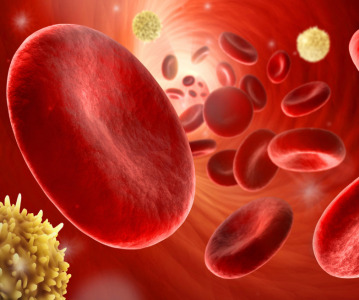The Curtain Rises On DNA–Protein Interactions

For the first time, scientists have watched proteins interact with long single-stranded DNA molecules in real time.The new method should yield insights into DNA replication and repair, the researchers say.
For the first time, scientists have watched proteins interact with long single-stranded DNA molecules in real time (Anal. Chem., DOI: 10.1021/ac302117z). The new method should yield insights into DNA replication and repair, the researchers say.
Until now, scientists could only watch proteins interacting with double-stranded DNA or very short single strands, says Eric Greene of Columbia University, who developed the new method. But, he says, “Basically anything to do with DNA metabolism or DNA repair involves single-stranded DNA intermediates.”
To find a way to monitor long single strands, Greene built upon a method his team devised six years ago, which visualizes proteins binding to double-stranded DNA (Langmuir, DOI: 10.1021/la051944a). They tethered fluorescent DNA molecules to lipids in a bilayer that coated the surface of a microfluidic sample chamber. When the researchers flowed buffer through the chamber, the DNA molecules diffused within the bilayer, eventually aligning along a nanofabricated barrier in the bilayer. The researchers added proteins to the chamber and observed their interactions with DNA in real time by noting changes in the DNA’s fluorescent signal. The team called the method “DNA curtains” because the hundreds of aligned DNA strands—visualized by total internal reflection fluorescence microscopy—reminded them of a window curtain.
But the technique didn’t work with single-stranded DNA, which is so flexible that it often folds upon itself into extensive secondary structures that preclude protein binding. Also, the intercalating fluorescent dyes that label double-stranded DNA can break single strands of DNA.
So Greene and his coworkers found a way to simultaneously unravel folded-up single-stranded DNA and fluorescently label it. The key was a protein called replication protein A (RPA), which binds single strands during DNA replication to prevent them from folding up. When the researchers added a fluorescently labeled version of the protein to a DNA-curtains assay, it coated single-stranded DNA molecules, helping extend the DNA and keep it accessible to proteins. Because RPA coats all single-stranded DNA in cells, the researchers say, the ubiquitous protein is unlikely to interfere with the binding of other proteins.
To test whether the assay could visualize interactions of single-stranded DNA with other proteins, the team injected fluorescently tagged Sgs1 protein into a flow cell containing RPA-bound DNA curtains. Sgs1 is a yeast helicase protein involved in DNA repair. Using fluorescence microscopy to visualize the labeled RPA and Sgs1 proteins, the researchers watched Sgs1 bind single-stranded DNA in real time.
Greene says that the new assay will allow researchers to probe when and where proteins bind single-stranded DNA, and how multiple proteins influence each other’s binding. “We can watch all of this stuff as it happens,” he says.
Maria Spies of the University of Iowa says, “The DNA curtains approach combines the benefits of single-molecule and bulk studies.” That’s because, she explains, researchers can use it to visualize hundreds of single-stranded DNA molecules at the same time. “I can’t wait to try this system in my lab,” she says.
Related News
-
News Google-backed start-up raises US$600 million to support AI drug discovery and design
London-based Isomorphic Labs, an AI-driven drug design and development start-up backed by Google’s AI research lab DeepMind, has raised US$600 million in its first external funding round by Thrive Capital. The funding will provide further power t... -
News AstraZeneca to invest US$2.5 billion in Beijing R&D centre
Amid investigations of former AstraZeneca China head Leon Wang in 2024, AstraZeneca have outlined plans to establish its sixth global strategic R&D centre in China. Their aim is to further advance life sciences in China with major research and manufact... -
News Experimental drug for managing aortic valve stenosis shows promise
The new small molecule drug ataciguat is garnering attention for its potential to manage aortic valve stenosis, which may prevent the need for surgery and significantly improve patient experience. -
News How GLP-1 agonists are reshaping drug delivery innovations
GLP-1 agonist drug products like Ozempic, Wegovy, and Mounjaro have taken the healthcare industry by storm in recent years. Originally conceived as treatment for Type 2 diabetes, the weight-loss effects of these products have taken on unprecedented int... -
News A Day in the Life of a Start-Up Founder and CEO
At CPHI we work to support Start-Up companies in the pharmaceutical industry and recognise the expertise and innovative angles they bring to the field. Through our Start-Up Programme we have gotten to know some of these leaders, and in this Day in the ... -
News Biopharmaceutical manufacturing boost part of new UK government budget
In their national budget announced by the UK Labour Party, biopharmaceutical production and manufacturing are set to receive a significant boost in capital grants through the Life Sciences Innovative Manufacturing Fund (LSIMF). -
News CPHI Podcast Series: The power of proteins in antibody drug development
In the latest episode of the CPHI Podcast Series, Lucy Chard is joined by Thomas Cornell from Abzena to discuss protein engineering for drug design and development. -
News Amgen sues Samsung biologics unit over biosimilar for bone disease
Samsung Bioepis, the biologics unit of Samsung, has been issued a lawsuit brought forth by Amgen over proposed biosimilars of Amgen’s bone drugs Prolia and Xgeva.
Position your company at the heart of the global Pharma industry with a CPHI Online membership
-
Your products and solutions visible to thousands of visitors within the largest Pharma marketplace
-
Generate high-quality, engaged leads for your business, all year round
-
Promote your business as the industry’s thought-leader by hosting your reports, brochures and videos within your profile
-
Your company’s profile boosted at all participating CPHI events
-
An easy-to-use platform with a detailed dashboard showing your leads and performance







.png)